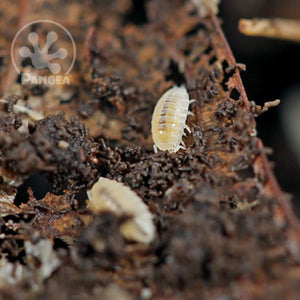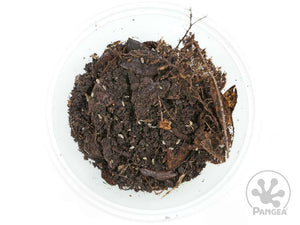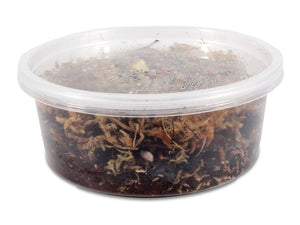Your Cart is Empty



Trichorhina tomentosa 'Dwarf White' Isopods
$14.99 - $74.99
Need a hardworking clean-up crew for your bioactive vivarium? Or ready to begin keeping your own isopod colony? Look no further. Pangea Reptile has you covered with our amazing selection of Isopods. These terrestrial crustaceans do the dirty work for you cleaning up animal waste and decaying plant matter so you don't have to.
Trichorhina tomentosa ‘Dwarf White’ isopods are a species of woodlouse, a terrestrial crustacean (Crustacea : Isopoda : Oniscidea), occurring within the family Platyarthridae.
- Small species
- Burrowing
- White coloration
- Moderate reproduction
- Easy-to-maintain
Bioactive Clean-up Crew
Isopods make an excellent clean-up crew when introduced into bioactive and naturalistic living systems. Their ability to break down organic waste matter throughout their environment help to maintain healthy habitat conditions. Pangea Leaf Litter Decor, cork bark, rotting wood, excessive food waste, and fecal waste produced by primary inhabitants (i.e. reptiles, amphibians, invertebrates) are all acceptable forms of nutrition for isopods. We do not recommend feeding leaf litter from outdoors that has not been properly treated and sterilized prior to use. Our wide selection of Pangea Leaf Litter Decor and hardscape wood products make it easier for you to care for your isopods safely!
Bioactive Vivarium Seeding Provide a sufficient amount of leaf litter and places for isopods to hide. Evenly disperse all contents of the deli cup into your vivarium substrate. Once isopods are introduced, they will begin finding their way into the substrate layer by seeking out humidity zones. Our isopod cultures are also housed with springtails to maintain healthy habitat conditions. Your culture may also contain springtails.
Nutrition
Terrestrial isopods are detritivores, which means they are natural waste-consumers. In the wild isopods may be observed consuming rotting wood, leaf litter, and other organic material. Replenishing their habitat often with leaf litter will provide a constant food source and humidity zones to live beneath. Vegetables such as zucchini, squash, potatoes, carrots, pumpkin, and asparagus may be used to supplement their diet. Monitor their food consumption by adding small amounts of freshly sliced vegetables making adjustments as needed. Remove any fuzzy or decaying food.
Feeders
Isopods can provide a nutritious meal for select amphibian, reptile, and invertebrate species. Fast-moving isopods can provide enrichment for animals by encouraging instinctual hunting behaviors. It is best to allow isopods to begin reproducing first before placing them into a vivarium with primary inhabitants. Large species of isopods (i.e. Porcellio dilatatus, Porcellio laevis) may be too bulky to be consumed easily by primary inhabitants. We do not recommend feeding outdoor wild specimens due to possible pesticides, bioaccumulation of heavy metals, and potentially less-than-adequate nutrition from unknown environmental sources. Our wide selection of Pangea microfauna makes it easier for you to care for your isopods safely!
Master Culture
For successfully setting up a master culture setup of isopods we recommend using 6 qt - 32 qt plastic shoebox tubs. Locking tubs are optional but provide added security. Creating a series of small holes on alternating sides of the container will help to achieve healthy flow and reduce mold. Adding 1-3 inches (more for burrowing species) of pre-soaked Pangea ABG Substrate will provide a suitable substrate. Adding Pangea Sphagnum Moss, Pangea Leaf Litter Decor (the more the better), and pieces of wood or cork bark will help provide multiple layers for isopods to inhabit and feel safe. Mist culture as needed.
*Co-habitation amongst separate species of Isopod is not recommended.*
This animal can only be shipped to the US Contiguous, except LA, OR, and FL because of state regulations.




